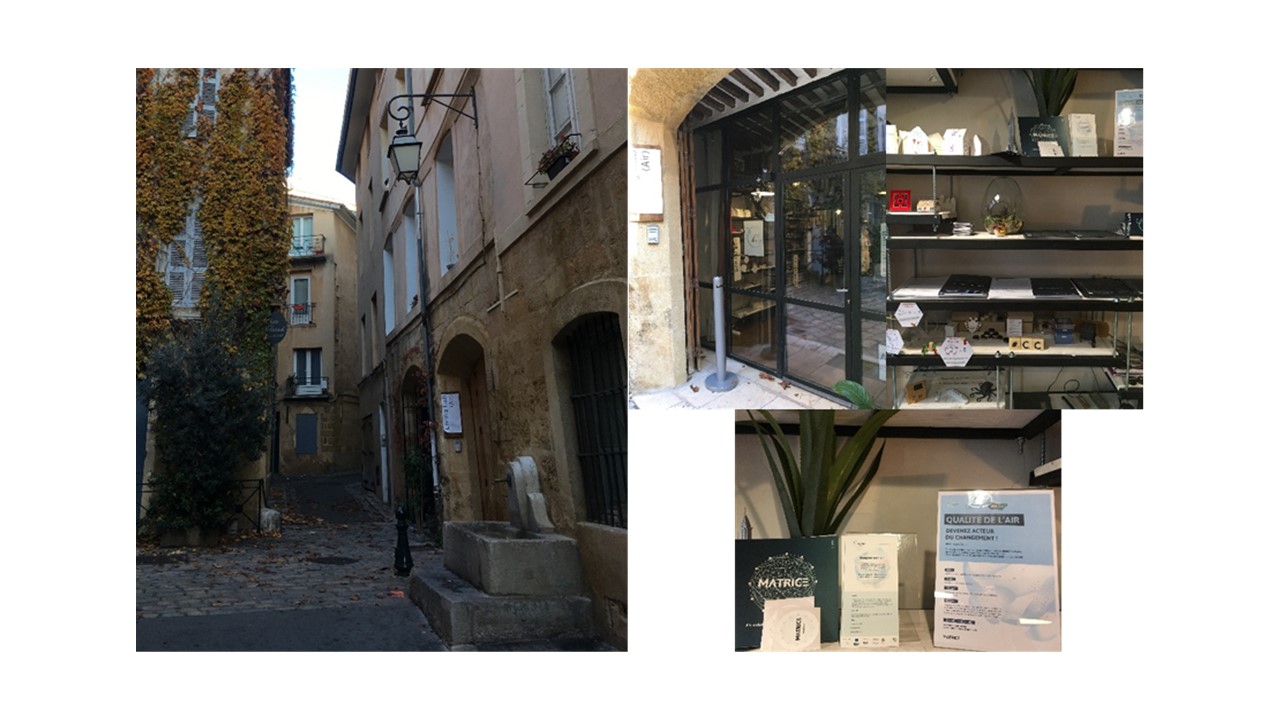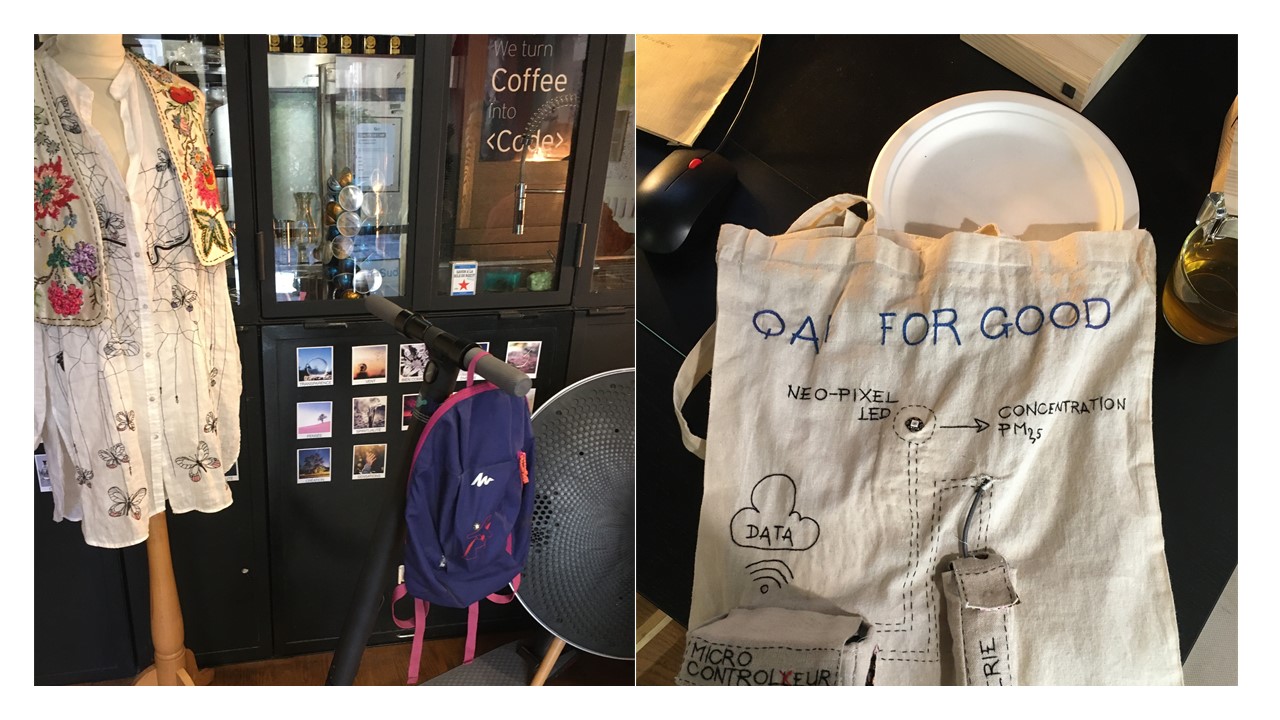It is a sunny and crisp autumn morning in Aix-en-Provence, south of France. The little streets in the Old Town hide some beautiful corners like in Rue Loubon, where a fountain carved in yellow stone keeps dropping water. It sounds fresh. Next to it one can find a bright glass door. Has a new shop opened? Is it a new coffee shop? You cannot avoid looking through the door, the interior is warm and welcoming. There is a little cloud in the front door, it is showing a green light. A distracted smoker passes by and the light turns red. At the end of the main entrance there is a counter with a coffee maker and one can read: «Here, we turn coffee into code». A big computed screen is fitted on the right-hand side wall and one can see colourful three-dimensional maps. A set of shelves on the left-hand side provides the visitor with leaflets about air pollutants and their problematic; data and code; and governance. This is indeed a very special place. The Living Lab, at 8 Rue Loubon in Aix-en Provence, is an open space where enthusiasm, creativity and data merge together with the aim to improve air quality.

A set of workshops or ateliers are scheduled to run in the Living Lab starting on the first term of 2020, run by the cooperative ‘A LAB in the air’ in collaboration with local artists, designers and entrepreneurs. One of the first set of ateliers is ‘Wearables for air’. These ateliers aim to inform the population how to measure air pollutants and how to include these measurements in our daily life. Small sensors measuring air pollution can be embedded (and also nicely embroidered) in our clothes and handbags and provide the air pollution levels in all the places where we go. One can therefore draw its own air pollution map. Keep an eye on the fashion magazines, the coming fashion trend might tell you the air pollution levels you breathe!
Other scheduled ateliers for 2020 are ‘Cartographie collaborative’ (‘Collective cartography’), ‘Bee to bee’ and ‘Jardin collaboratif’ (Collective garden).

Engaging citizens in air quaility projects is crucial to induce behavioural change and make a positive impact on the society. By giving the tools to understand the problem, understand the sources and highlighting what we can do to improve and how, evidence-based decisions can be made by all. However, one of the main challenges to involve general public and citizens in the topic of air quality is the lack of sense of air pollution. One cannot see it, either touch it and very rarely smell it. Poor air quality levels are shown by main Environmental Agencies in colourful dots in a map. What how these scattered points in a city or an area can attract the attention of everyone? What is the impact of poor air quality on everyone’s life?
The workshops run in the Living Lab are one of the main core activities to communicate with beneficiaries within the funded Urban Innovative Action (UIA) - DIgital Alliance for Marseille Sustainability (DIAMS) project. UIA-DIAMS aims to engage citizens (and all parts of the society, from policy makers to industries, from students to start-ups) to increase their knowledge about the problematic of air quality in cities to eventually create a series of local policies to improve the air we breathe. The project sits on the idea of creating a digital platform for exchanging air quality data (measurements) and digital services (apps, webs, etc.). UIA-DIAMS aims to transform the environmental policies by making use of the digital revolution for better and more efficient local action plans. A Lab in the AIR is the partner in the UIA-DIAMS project in charge with the engagement program with citizens.
The aim of the workshops run in the Living Lab is to overcome this lack of sense of air pollution measurments. First of all, an understanding what air pollution is and why it is bad for our health and also for the ecosystems around us is needed. Where is it coming from? What we can do to combat it? Furthermore, these workshops are aiming to create a sense of community with every actor working on its competences.
By increasing the knowledge and providing the citizens with the means to measure the levels of air pollutants they are breathing, by giving a personalized sense to measurements, citizens will be feeling to engage, participate and find solutions. Like this, better and collaborative solutions can be designed.
To know more about the Living Lab and its activities and also about the UIA-DIAMS project, please visit the following websites:
- https://www.alabintheair.cc/
- https://www.air-diams.org/
- https://www.uia-initiative.eu/en/uia-cities/aixmarseille-provence-metropole
About this resource
The Urban Innovative Actions (UIA) is a European Union initiative that provided funding to urban areas across Europe to test new and unproven solutions to urban challenges. The initiative had a total ERDF budget of €372 million for 2014-2020.
Similar content




